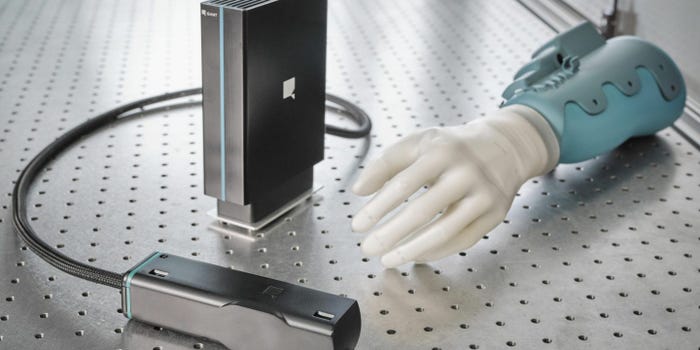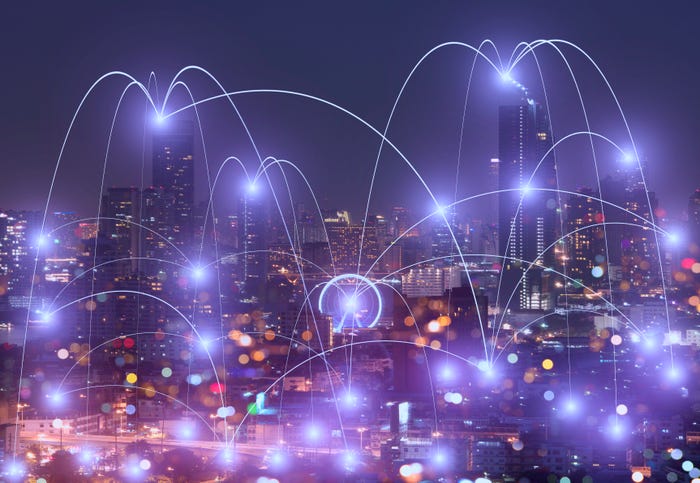To meet virtual care needs during COVID-19, some organizations have bolstered network capacity, security and reevaluated processes for digital requirements.
June 8, 2020

Key takeaways from this article:
The COVID-19 crisis has strained health care infrastructure and shone a light on needs for resilience and bolstered security during times of crisis.
As telehealth takes hold, greater network capacity needs and security considerations will become paramount.
Health care practitioners say that in addition to bolstering health care IT infrastructure, organizations can use this time to redesign processes and bring more comprehensive care to telehealth.
Over the past several years, myriad health care organizations embraced virtual care options incrementally. With COVID-19 and physical distancing, telehealth exploded virtually overnight.
Telemedicine visits increased at an average compound annual growth rate of 52% per year from 2005 to 2014, according to the Journal of the American Medical Association. In 2020, telehealth grew 80% year over year, according to data Arizton‘s recent research report Telehealth Market in US – Industry Outlook and Forecast 2020-2025.
[IoT World, North America’s largest IoT event, is going virtual August 11-13 with a three-day virtual experience putting IoT, AI, 5G and edge into action across industry verticals. Register today]
The definition of telehealth has broadened beyond simple telecommunications-based care and videoconferencing to encompass connected medical devices that measure patient indicators remotely. The Internet of Things (IoT) has extended traditional videoconference visits to enable practitioners to remotely monitor patients’ blood pressure, oxygenation levels, pulse and other key metrics.
COVID-19 Strains Health Care Infrastructure
With the advent of COVID-19, it became critical to treat patients from a distance to slow virus spread and mitigate strained health care systems. As a result, many organizations had to address their network capacity and security profiles to accommodate increased remote patient demand. According to a poll in a recent telehealth webinar, 61% of health care respondents said they anticipated a permanent shift toward telehealth visits post-COVID-19.
Practitioners say that virtual care is a foundational shift.
“When you move a significant amount of in-person to virtual, you need to be able to provide all those support services in a coordinated fashion. It’s not just hopping on and providing a virtual visit,” said Dr. Peter Fleischut in a webinar on the dramatic increase in telehealth demand.
New York-Presbyterian Hospital launched 50 telehealth programs in 2017 – from urgent care to specialty care to remote patient monitoring. But the COVID-19 crisis pushed demand to a new level, Fleischut said.
By spring 2020, the hospital’s demand for digital health had ballooned from some 1,000 telehealth visits a week to some 250,000, Fleischut said. “It’s made up 50% of our volume,” he said.
During the crisis, the hospital also distributed tens of thousands of remote monitoring devices, including pulse oximeters and home oxygen concentrating devices. It also uses CT-scan capability in ambulances for stroke patients, providing critical data before patients arrive at a hospital. These remote capabilities require robust health care infrastructure.
“When you do that kind of volume, it is critical to have the infrastructure, to have the redundancy in place, to have the analytics in place,” Fleischut said. “If we treat people with strokes in ambulances, we need dedicated network infrastructure in place to do it safely and securely.”
Hospitals’ Short-Term Scramble
As health care organizations built temporary capacity to deal with the crisis, often using tents to do so, IT departments had to address bandwidth gaps and network strain.
Hospitals in Italy, for example, were overwhelmed with patients in February and March, and built temporary ICU tents, building out necessary Wi-Fi connections. But connectivity remained “an issue,” said Elena Sini, group CIO of GVM Care & Research in a webinar on COVID-19 health care responses in Italy and Germany.
In Italy, overall network traffic bounced up to about 90% on fixed landlines and 40% on mobile networks given the crisis. “Everybody is online and working from home. It can be complex to respond to the increase in demand. You have to ensure that systems can handle the demand on your network,” she said.
New York-Presbyterian addressed strains on networks by doubling capacity proactively.
“We were aggressive to ensure that we had as much network capacity as we could,” Fleischut said. “Anytime we hit 40% utilization, we would double our capacity because we didn’t know where our ceiling would be.”
Sini noted that this goes beyond technology. IT also has to contend with a lack of hardware given breakdowns in the supply chain post-lockdown. In late March, she said, supply chain dysfunction continues to plague the health care system.
IT and Health Care Processes Need Retooling
Technology is only a piece of the puzzle, though, in managing health care infrastructure. “It’s about people, process and technology,” Fleischut said. “It’s probably 80% people, 15% process and 5% technology.”
That means rethinking formerly on-site operations. The hospital, for example, had to re-examine existing processes for registration, patient consent form signing and translation services for non-English speakers and make them virtual — but then also rethink how services are provided.
“It’s not an in-person visit that we make virtual and say you are done,” he said. “It’s an opportunity to redefine the visit and create a care model that … is personalized: Some patients may need a nutritionist, an interpreter or a specialist.”
Other IT pros note that the emergency conditions of COVID-19 have required IT to revamp processes, roles and projects based on changing priorities.
“You have to be close to the users,” said Henning Schneider, CIO of Asklepios Kliniken, Germany, on the webinar. “Now everyone is focusing on how to support nurses and doctors when they have IT issues.”
Schneider noted that working in tandem with health care workers has also enabled IT to show the power of data analysis for health care workers.
“We have stopped our other IT projects — it’s something that really hurts — but now IT can focus on user support and on data. We are trying to prove what our IT team can do with all this data [a dashboard with occupation rates for beds and ventilators].”
Shoring Up Security to Face Increase in Attacks
Sini noted an increase in cybersecurity attacks on hospital systems in March, where malicious actors exploited the crisis to identify system vulnerabilities.
Organizations saw a 30% increase last month in the number of COVID-19-themed phishing sites and lures, according to recent data. But they have not seen a commensurate increase in the number of successful breaches, according to the Healthcare Information Sharing and Analysis Center (H-ISAC), as Dark Reading noted.
Schneider noted that some German university hospitals shut down IT networks because of increased cyberattacks on email systems. “This is a frightening situation that there are organizations trying to get benefit from this,” he said. “Scanning for shadow devices and authenticating them is more difficult to do when your environment includes devices in patients’ homes and also for employees — doctors and nurses — and you need to implement more rigorous cyber-hygiene,” said Jessica Groopman, founder and analyst at Kaleido Insights.
Given the spike in telehealth visits, there was also a relaxation of HIPAA Security Rule requirements for telehealth service providers. That invites vulnerabilities in videoconferencing platforms and other systems.
For example, researchers found malicious attackers targeting Zoom domains in light of the videoconferencing application’s popularity.
“One of the regulations that was lightened, was the ability to use general consumer apps like Skype, which traditionally are not out-of-the-box equipped to handle HIPAA-specific data,” Groopman said. “These services are not impenetrable.”
Shoring Up Health Care Infrastructure for the Futures
As health care organizations survey the future, they see gaps in infrastructure on which the crisis shone a light.
One is the lack of data coordination and centralization with global problems like COVID-19. “Every IT department is trying to build its own system for reporting,” Schneider said. “It would be better if you had a nationwide reporting system.”
Another, say practitioners, is creating reimbursable workflows for remote patient monitoring The ability to use connected devices to monitor patients remotely and communicate data to practitioners in compliant platforms is critical to making telehealth more than simply digital communication. Payers, however, have recently expanded reimbursement for remote patient monitoring, including for presumed COVID-19 patients.
Increasing patient access to connected monitoring tools will become critical in the future, Sini said. “We are missing the ability for patients to self-screen before they come into the ER,” Sini said.
Ultimately, Fleischut said that COVID-19 has laid bare the need for infrastructure to be ready for the next crisis. Robust infrastructure, he said, “is critical to our future.”
About the Author(s)
You May Also Like


.png?width=700&auto=webp&quality=80&disable=upscale)
.png?width=300&auto=webp&quality=80&disable=upscale)


.png?width=300&auto=webp&quality=80&disable=upscale)